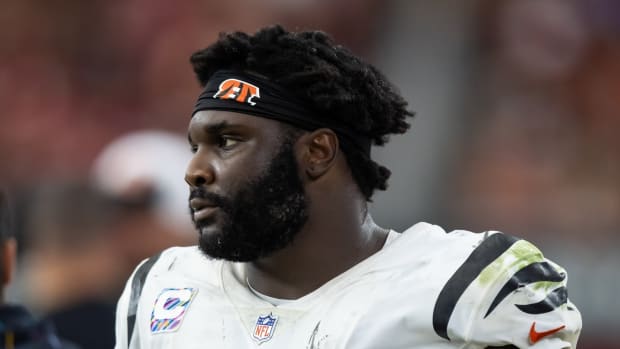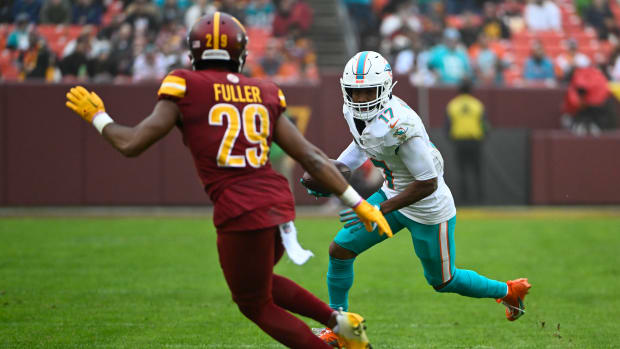Business of Football: How Opt-Out Stipends Work; COVID Amendment Negotiations; More
Players have now returned to team facilities as the 2020 training camp is officially underway. As always, the business of football is a dominant part of the conversation. Here is my look at a few topics in the news.
A mini-CBA; the sequel
Deadlines spurred action—of course—and the NFL and NFLPA completed a two-part negotiation (health/safety protocols and financial adjustments for anticipated losses) to allow for the start of NFL training camps. And once the lawyers finally draw up these COVID Amendments (CA), all the league and its players have to worry about is playing through a global pandemic; more on that below.
This was the second time in five months that the NFL and NFLPA hashed out a deal to govern the economics of the game, following the negotiation of an 11-year CBA. As readers of this space know, I pointed out deficiencies of that CBA for the Players, yet it passed by the slimmest of margins for approval. The two sides breathed deeply, only to find themselves revising short-term economics only months later.
As to this CA negotiation, many suggested that since the NFL had not negotiated a force majeure clause in the CBA, the union would thus have leverage to fight off the league’s quest to reduce player pay. Leverage, however, is a fleeting thing and, as predicted here, the owners strategically ran out the clock to get the deadline deal they wanted.
I found the following CA sections particularly interesting, regarding their impact on the business of football.
Tipping the cap
2020
Reports about the COVID Amendments trumpeted that the 2020 salary cap would remain intact at $198 million per team. Reading the fine print, however, shows that player benefits will decrease by $17 million per team, as they will not receive the following benefits this year:
• Second career savings plan
• Annuity
• Severance pay
• Performance based pay
• Tuition assistance
• Playoff bye week pay
• Pro Bowl pay (unless Pro Bowl is played)
The CA says the benefits will be restored “after 2023.” In other words, while the visceral cap number remains the same, the players have “loaned” $17 million of their previously collectively-bargained benefits back to the NFL, per team. They may get those monies back in three years, perhaps longer.
2021
Weeks ago, NFL media floated a rumor that the 2021 cap may drop by as much as $40 million per team. I saw that as the league’s opening offer to the players, and they essentially were able to get that number, as the 2021 cap—projected to be close to $215 million pre-pandemic—is now “no lower than $175 million,” some $40 million below the projection.
In discussing the cap, there is a secret that teams have that the public hardly knows about: Most teams have cap numbers much higher than the 2020 cap number of $198 million (and potentially $175 million next year). Teams can roll over cap room from one year to the next, giving them higher “adjusted cap” numbers. And, for minimum team spending purposes, they are only judged on the stated team cap number ($198 million this year). For example, the adjusted cap numbers for the Colts and Browns are $240 and $230 million, respectively, on a supposed $198 million cap. Simply, teams can spend a lot more than they do, and they are not held sufficiently accountable.
Beyond the cuts to 2020 and 2021 caps, there will be further “smoothing”—reducing of projected cap numbers—in 2022 and 2023 for whatever losses happen in 2020. In other words, the NFL—the side supposedly without leverage here—got what it wanted.
Opting out
The most interesting of the negotiated terms for the CA is the voluntary opt-out, allowing players to choose not to play through the pandemic. They will not receive an accrued or credited season and will receive a $150,000 payment, referred to as a “stipend” but not really a stipend at all. It is a salary advance or, more simply, a loan.
Players who opt out must, of course, have a contract, and that contract will be tolled (read: “frozen”) until next year, when—assuming the player returns—it reactivates. At that time, the player’s team will start deducting the $150,000 stipend/advance/loan from their 2021 salary (which was formerly their 2020 salary). In other words, teams will be made whole for these stipends.
The number of players voluntarily opting out has been significant, so much so that the NFL—as of this writing—is trying to further renegotiate the deadline for opting out, giving players less time to decide. The list includes players of all caliber, from well-known names such as Dont’a Hightower, C.J. Mosley and Nate Solder to many more names that fans hardly recognize.
As to the latter group, it does bring up the potential loophole that players could opt out, receive the stipend and never make a 2021 roster. And as for teams getting their money back in those situations, well, good luck with that. I have firsthand experience while working for the Packers, futilely chasing down salary advances from players we had released. NFL teams have to know that some of these “stipends” are monies they will never see again, a $150,000 cash and cap charge that they will never get back.
One other interesting CA note: Players testing positive for COVID after “high-risk” activities will be placed on NFI (the non-football injury list), meaning teams can not pay their salaries. The owners pushed for—and got—a broad definition of these activities, which basically include any social gathering of more than 15 people. Of course, there will be lawyers: Teams will have to prove this behavior with pictures and witnesses, and don’t expect any NFL player selfies this year.
Playing through
This all, of course, assumes the unassumable: that the NFL can play through this.
I cannot read and write about the NFL—or Major League Baseball, for that matter—without thinking that playing in 2020 is more of a hope than a plan. Remember when the NBA shut down its operations when one player tested positive for COVID in March? Yes, the leagues that are bubbled—NBA, MLS, NWSL, NHL—are having, for now, great success in controlling infections. But the NFL is not operating in a bubble, at least for now, and the most popular transaction on the daily NFL Personnel Notice is now placement on the reserve/COVID list. Starting quarterbacks (Matthew Stafford, Gardner Minshew) are on the list; as is a head coach (Doug Pederson). What if this was October and not August? If played, this season will not have the cherished competitive balance that the NFL strives for.
A few players have reached out to me to discuss whether to opt out. I am hearing a theme: While team staffs are doing their best to make the environment safe, a number of players feel like the league “playing through” a pandemic this season is not in the best interests of their health and safety. A couple players opting out have said that they do not want to be part of this “test year” and could come back next year when we have experience playing through COVID.
On the management side, I would think there are discussions going on at the highest levels about potential “bubbling”—such as a locations for the AFC North, NFC East and so forth—and other scenarios. And I would think they have to be asking this question: “How many negative COVID outcomes can we tolerate?” Most players and staff will recover well, but what if they don’t? What if players or staff have continuing reduced lung capacity, lingering vascular issues or, God forbid, worse? If I were running the NFL or one of its teams, these are questions that would be keeping me up at night.
Playing through a pandemic is certainly not optimal for player and staff health and safety, as I wrote here. But I—perhaps as much as anyone—recognize that health and safety is not the top priority here; economics matters, and it matters a lot.
As I always say, the business of sports always wins, but the virus might be a foe too formidable to overcome.
• Question or comment? Email us.




































